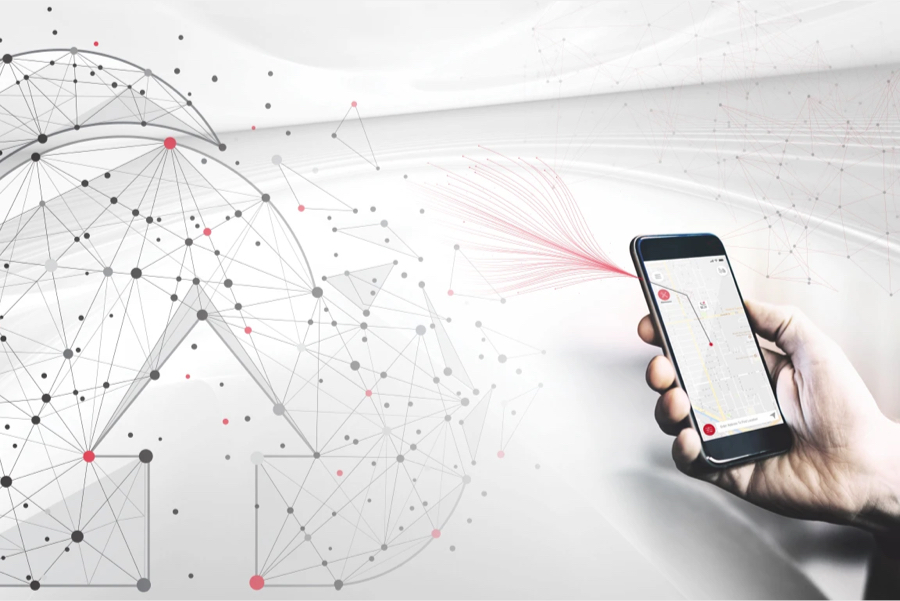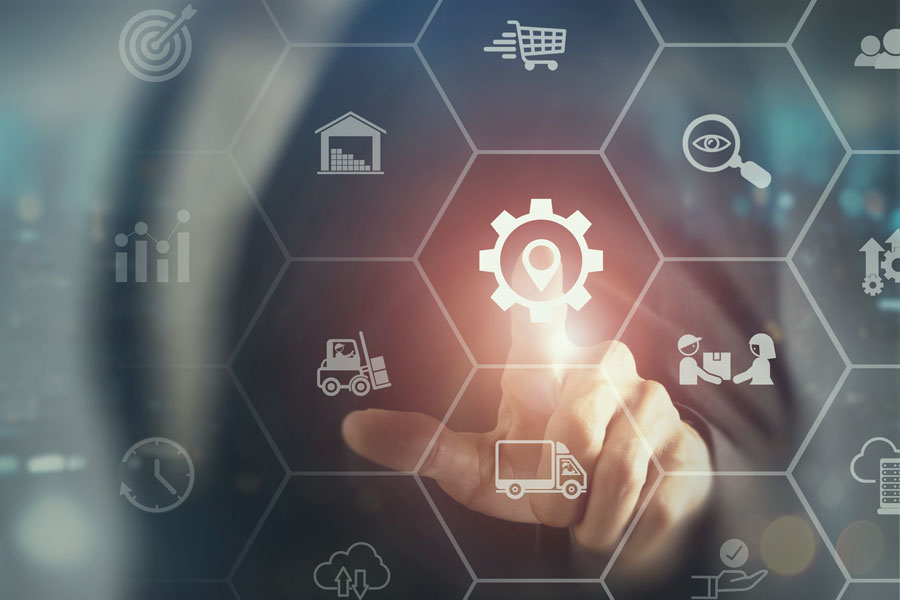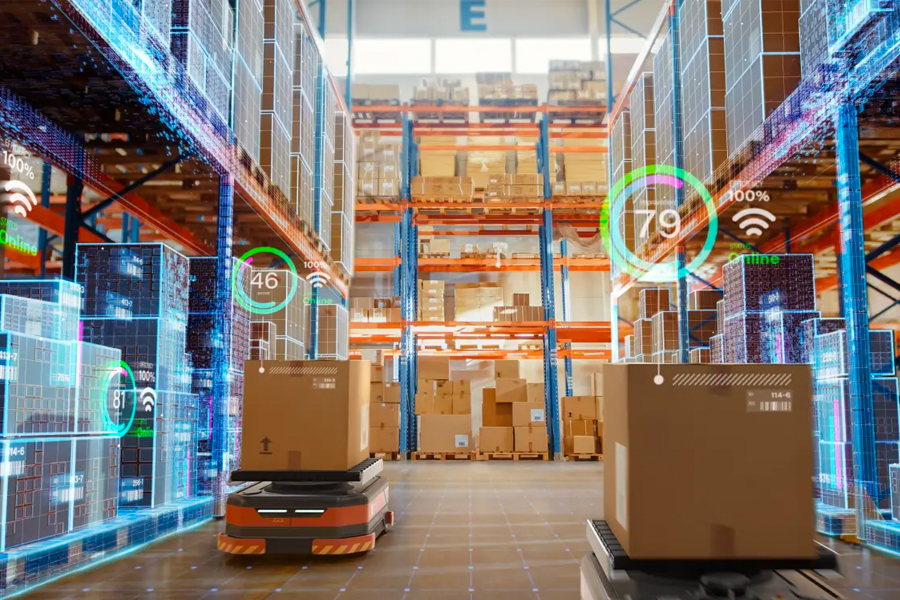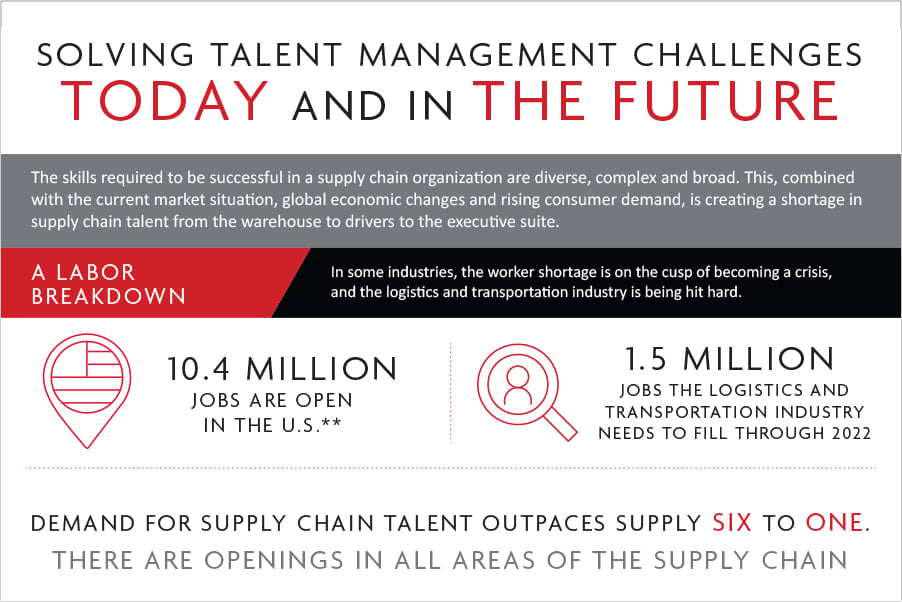The Future of Logistics Part 2 of 2

This is part two of our two-part The Future of Logistics series. To read part one, click here.
The future of logistics benefits from the data provided by multiple systems, advanced analytics, and the automation of intelligence. As information is provided through the many different sources, the digital supply chain connects technologies, assets, systems, and locations to enable real-time analysis, smarter decision making, and informed actions inside the supply chain.
The data provides predictive analytics that helps shape new strategies for transportation and logistics. It takes into account all variables inside the supply chain, as well as traffic, weather, and social trends, to create an accurate plan. It also allows for flexibility. For example, instead of creating monthly plans, strategies are set weekly or daily to meet inventory volatility and customer demand.
While this breaks the traditional steps between fixed processes, it opens the door for continuous improvement. It allows for better placement of inventory in warehouses that drives quicker order fulfillment. The data, connectivity, and analytics provides the foundation for automation and smart warehouses.
At Ryder, we’ve partnered with leading technology companies to prioritize four types of innovative technologies most applicable to creating and supporting an automated smart warehouse: robotics, sensors, wearables, and drones.
Robotics such as autonomous forklifts, tuggers, transporters, and assembly line vehicles provide a safe, efficient and reliable solution for the movement of goods in a warehouse, while improving productivity, visibility, and customer service levels. Autonomous forklifts significantly reduce travel time, giving employees more time to complete other, more complex tasks. Sensors and identification tools automatically locate and profile supply chain objects to capture and communicate data across the supply chain. These technologies are used for tracking, tracing, security, inventory consolidation, and event management. Wearable technology gives managers and employees the capability to exchange data between devices and the network. Wearables support core processes such as shipping, receiving, routing, inventory management, picking, and replenishment. Drones have many uses in the smart warehouse including inventory management, facility management and security. Arial drones are used to travel through facilities to map the warehouse and update data on inventory and facility conditions. Manually, this task could take two or more employees and at least one scissor lift to complete.
Outside of the walls of warehouses and distribution centers, advanced vehicle technology that includes everything from in-cab systems to engine and trailer diagnostics, and from electric and hydrogen fuel systems to autonomy is transforming the supply chain. Fleet technology and innovation is being driven by both regulatory mandates and the need for greater visibility and efficiency. The heart of the connected truck is the telematics system that monitors location, speed, hours of service, and data that drives predictive analytics for companies.
Connected trucks have the ability to provide a plethora of data that translates into business intelligence and key predictive analytics with the right people utilizing it. This is where RyderGyde™ and RyderShare™ come in to connect fleet managers to their vehicles, and the vehicles to the supply chain. The data provided can be used to determine the condition of the vehicle, where goods are, how to manage exceptions, and develop new business strategies. The data can tell fleet and supply chain managers location information in real time, what speed the vehicle is traveling, and how long a vehicle has been in a specific position. Fleet managers can also determine if drivers are accelerating erratically or making abrupt stops. Supply chain managers can know if the delivery will be late and how to adjust staffing.
Connectivity extends much beyond the total vehicle to subsystems such as the engine and trailers. This includes fault code elements that trigger check engine lights or service indicators, and temperature control capabilities to keep products fresh and meet FDA regulations. Because of connectivity, data, and analytics, these fault codes can alert fleet managers and drivers to operating conditions that could lead to a breakdown or out of service event, which could cause major downtime for the vehicle.
At Ryder, we are leveraging our relationships with Original Equipment Manufacturers (OEMs) to work with and understand how advanced vehicle technologies fit into a company’s portfolio. This includes our Ryder Telematics with Geotab portfolio, in shop maintenance technology, and our exclusive partnership with Aperia to implement the Halo Tire Inflator - an automatic tire inflation solution.
Because cleaner, more efficient vehicles won’t be optional going forward, our relationships also include partnerships manufacturers of advanced fuel vehicles such as electric and hydrogen fuel cells. Through these partnerships Ryder has not only strengthened its leadership in advanced vehicle technology but also expanded upon the ability to provide customers with the most flexibility, choice, and control for their fleet. The relationships also ensure that integration is looked at through the lens of a fleet operator and not a truck manufacturer.
And, because electrification and charging infrastructure is the biggest barrier for companies to move to an electric fleet, we have partnered with energy companies that not only provide charging infrastructure for your fleet, but also assess your power usage through your supply chain to harness your electric grid and save money. Through this partnership we use grid management and power mitigation to charge your fleet. Additionally, best practices for a sustainable building – LED lighting, timers, windows, seals – are then put in place that allow for conserved energy to be utilized by the charging infrastructure. This saves companies millions of dollars from having to negotiate with an energy company and using the public grid to charge an electric fleet.
The Future is Now
Having all these pieces in place – technology, data, analytics, warehouse automation, advanced vehicles, and infrastructure – a connected digital supply chain can be adaptive and responsive to the demands of consumers. It gets products to assembly lines quicker and when needed. It strategically maps warehouses and distribution centers for inventory placement, and eliminates waste inside the supply chain. It drives accurate, efficient, and accelerated e-commerce fulfillment and last mile delivery.
The digital supply chain connects everyone involved from suppliers to the consumer. Products can be seen moving through the supply chain, fleets can maximize uptime, and consumers can better predict the delivery of their products they purchased. Companies can meet sustainability regulations, digitize records, and forecast better.
At Ryder, this isn’t just the future of logistics. We are doing it today through our E-commerce Fulfillment Solution, Ryder Last Mile, Ryder ChoiceLease and SelectCare Maintenance, our traditional Supply Chain Solutions, Transportation Management and Dedicated Transportation Solution. With our combination of technology, exclusive partnerships, people, processes, engineering, and infrastructure, we are helping companies transform supply chain disruptions and build the digital supply chains needed to drive customer satisfaction and profits.



